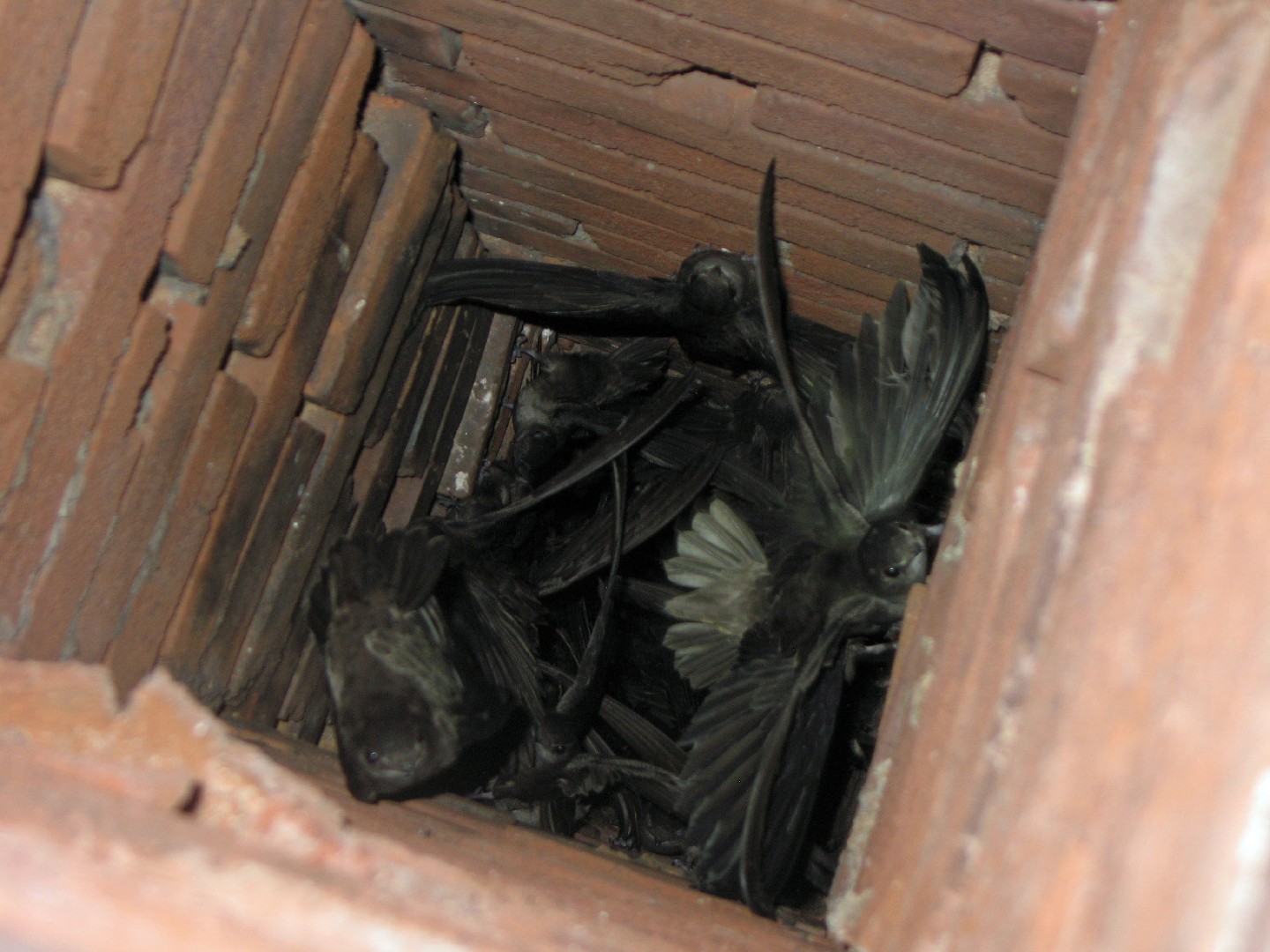Chimney Swift
A species of New World Needle-tailed Swifts Scientific name : Chaetura pelagica Genus : New World Needle-tailed Swifts
Chimney Swift, A species of New World Needle-tailed Swifts
Botanical name: Chaetura pelagica
Genus: New World Needle-tailed Swifts
Content
Description People often ask General Info
Description
The chimney Swift is a very distinct bird and can easily be identified due to its silhouette and call. Interestingly, these birds spend most of their lives aloft. They actually cannot perch, so instead they cling to the sides of trees and chimneys - a practice for which they were named. New closed-chimney house designs have caused the species to suffer.
Size
12 - 15 cm
Life Expectancy
14 years
Nest Placement
Building
Clutch Size
3 - 5 eggs
Incubation Period
1 - 2 broods
Number of Broods
16 - 21 days
Nestling Period
14 - 19 days
Feeding Habits
Chimney Swift predominantly consume flying insects, specifically flies, ants, wasps, bees, and various other bugs, while also preying on drifting spiders. Captured in-flight over varied habitats, they consume large prey using their bills and smaller insects directly. Additionally, chimney Swift occasionally eat berries and forage at night near artificial light sources, when daytime activity dwindles.
Habitat
Chimney Swift inhabits urban and suburban areas in eastern North America, using structures like chimneys for nesting. Their adaptability allows them to thrive in open savannas, wooded slopes, and humid forests. While foraging, they range over diverse environments, from open fields to forest canopies. During migration, they roost communally in chimneys, and winters are spent in South America's Amazon basin, utilizing open spaces and man-made shelters for roosting.
Nest Behavior
Chimney Swift engage in synchronous site selection with rhythmic calls, both parents contribute materials, and they exhibit shared parental care throughout nest building and offspring rearing.
Nest Characteristics
Chimney Swift construct half-saucer nests primarily in chimneys and similar vertical, low-light structures, using twigs bonded by their saliva, measuring around 2-3 inches by 4 inches by 1 inch.
Dite type
Insectivorous
People often ask
General Info
Feeding Habits
Bird food type
Bird Feeder Type

Platform
Sounds
Call
Recording location: United States
Behavior
Chimney Swift display a highly aerial lifestyle, spending most of their time in flight outside of roosting and nesting. With the arrival at their North American breeding sites, they engage in elaborate aerial courtship, forming monogamous seasonal pairs. Notably, chimney Swift perform a unique display where a trailing bird joins the leader in a simultaneous V-wing shape followed by a synchronized glide. These birds roost communally, often with large flocks in a chimney, and may include an additional, unmated helper aiding a pair's offspring. Post-fledging, families form larger groups in preparation for their migratory journey to South America, where tremendous gatherings of chimney Swift can be observed spiraling into roosts at dusk. Despite being common in urban environments, their behaviors are relatively unexplored due to the challenges in studying their high-flying and secluded nesting habits.
Distribution Area
A widespread breeding visitor to much of the eastern half of the United States and the southern reaches of eastern Canada, the chimney swift migrates to South America for the winter. It is a rare summer visitor to the western U.S, and has been recorded as a vagrant in Anguilla, Barbados, Greenland, Jamaica, Portugal, the United Kingdom and the U.S. Virgin Islands. 
Species Status
In 2018, the IUCN changed the chimney swift's status from near threatened to vulnerable. Although the global population is estimated at 15 million, it has declined precipitously across the majority of its range. In Canada, they were listed as threatened by COSEWIC for several years with a likely future listing as a Schedule 1 species of the Species at Risk Act. In the U.S., the chimney swift is protected by the Migratory Bird Treaty Act of 1918. 
